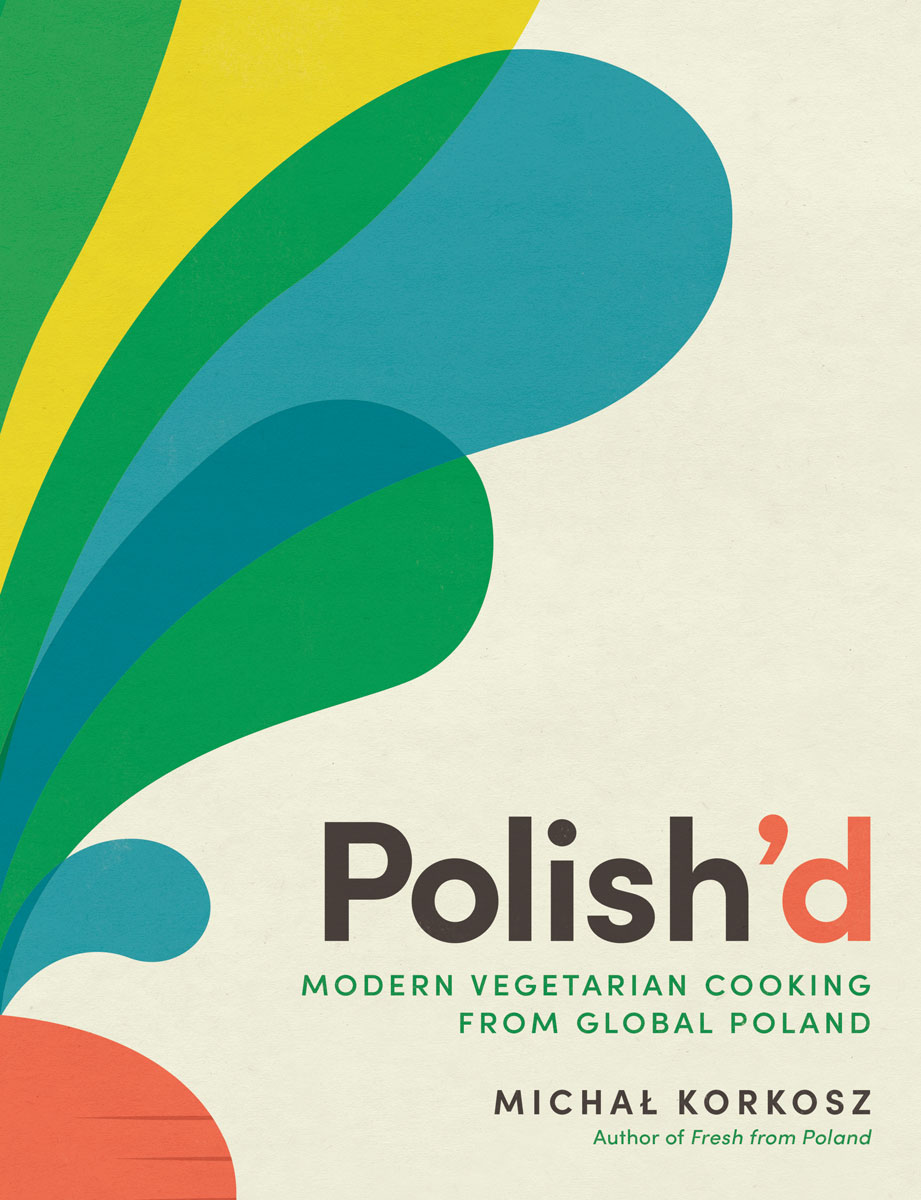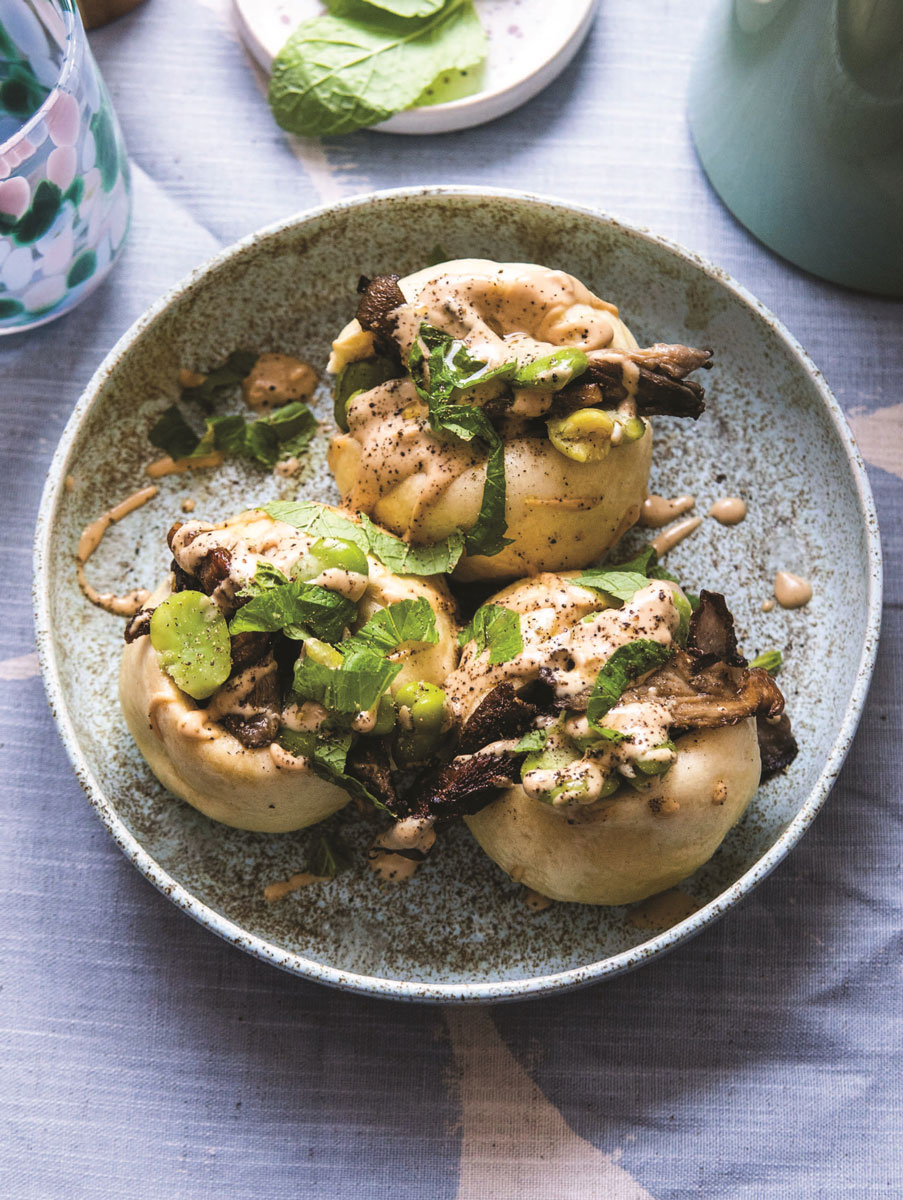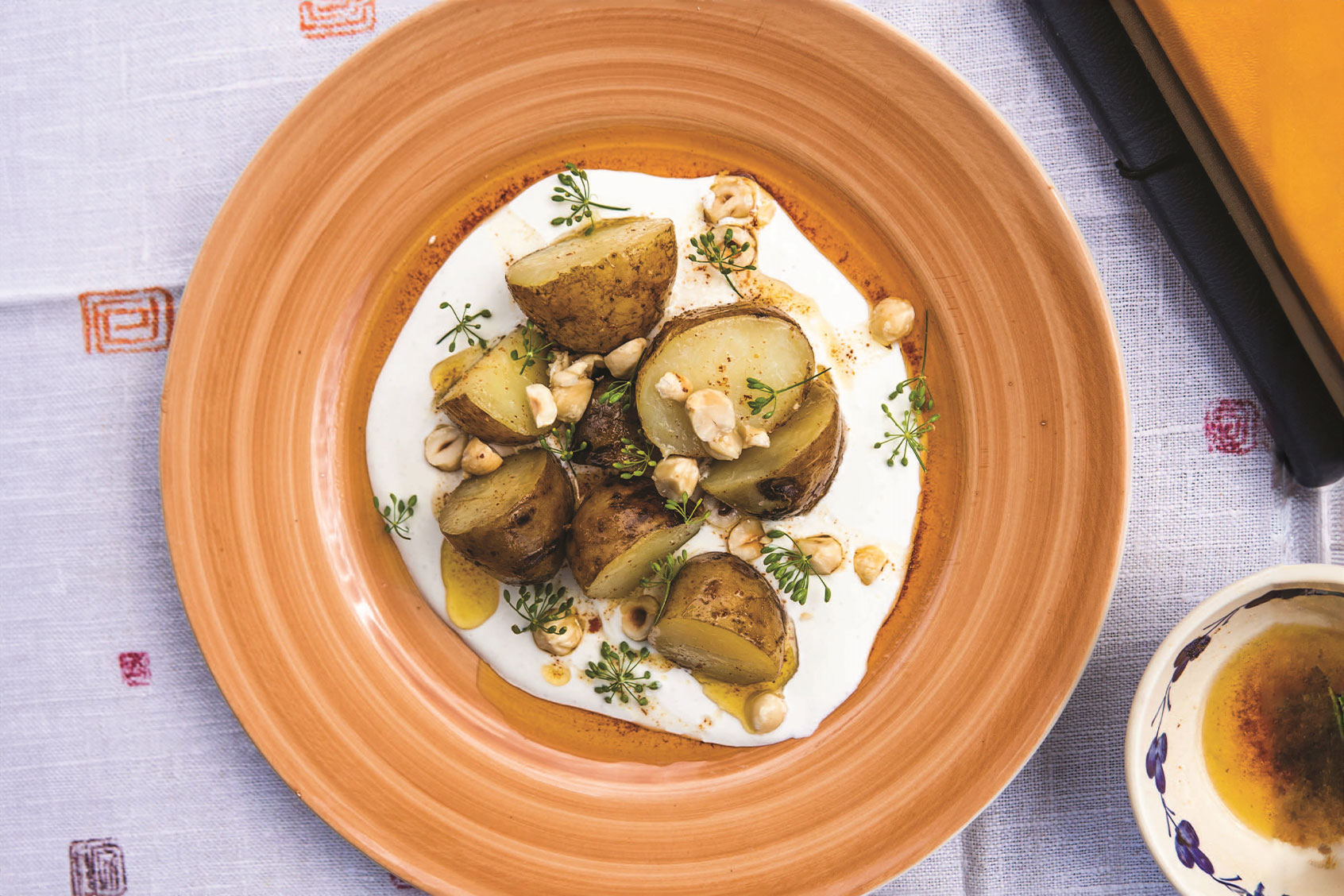One glance at the index of Michael Korkosz’ “Polish’d: Modern Vegetarian Cooking from Global Poland” quickly dispels the tired stereotype that Polish cuisine is simply an endless potato-forward and meat-heavy parade of kielbasa and pierogies. The list of kaleidoscopically flavorful dishes include caramel plums with cinnamon, sour cream and candied hazelnuts; steamed leeks with sour cream; panko-coated egg and green; and roasted and sun-dried tomato dip with “Polish dukkah.”
"Polish cuisine has been changing drastically over the last centuries,” Korkosz, a Warsaw-based cookbook author and food photographer, explained to me via email.
This cookbook, which was published last fall, was originally born out of Korkosz’s master’s thesis, which he intended to write about cookbooks as a source of national identity. In the end, he ended up not pursuing the topic because there had been so much published on it, but he read much of the literature and realized that the cookbooks that are published today will be a source of research for future historians and sociologists analyzing 21st-century Polish cuisine.
“My first cookbook ‘Fresh from Poland’ contains mostly traditional recipes from my grandma's kitchen but that’s not how Poles eat these days,” he said. “I realized that my new cookbooks should reflect modern trends in Polish cooking.”
The result is a stunning compendium of recipes influenced by globalization, immigration and an increased interest in plant-based eating, all underpinned by traditional Polish culinary traditions like fermentation, dairy-farming (and, yes, pierogi-making).
 Michał Korkosz (Photo courtesy of Mateusz Grzelak)To understand how Polish cuisine has developed, it’s important to understand its flavor history.
Michał Korkosz (Photo courtesy of Mateusz Grzelak)To understand how Polish cuisine has developed, it’s important to understand its flavor history.
"Poland is famous for its meat dishes and products like kiełbasa but it’s even more rich in a wide range of vegetables, spices, wild mushrooms and distinctive herbs,” Korkosz said. “It is also characterized by its use of various kinds of pasta, grains, kasha and dairy such as farmers cheese twaróg, smoked cheeses, fermented drink kefir and butter."
Beyond dishes and ingredients, though, Korkosz also acknowledges a very important flavor profile within Polish food: fermented foods and sweet-and-sour components.
 Polish'd Cover (Photo courtesy of The Experiment)
Polish'd Cover (Photo courtesy of The Experiment)
"It’s worth mentioning our long tradition of fermentation,” he said. “Fermented dill pickles and sauerkraut are stumbles of a very Polish household. I’d say the flavor profile of Polish cooking is sweet and sour. We love this combination using lots of fruits and honey in savory dishes. And we love soups! We have so many distinctive soups like rye sourdough soup żurek, chill beetroot soup or clear borscht."
Korkosz favorite classic Polish dishes and ingredients include farmer’s cheese (“because of its rich, refreshing taste”) and rye sourdough soup zurek, which he includes a recipe for in the cookbook with roasted mushrooms. “It’s a one-of-a-kind experience,” he explains. “You can even feel its taste in your feet.”
He continued: “I also adore silesian potato dumplings which are very chewy and elastic like a high-end cushion. But you know how it is. My preferences change almost every month!"
Want more great food writing and recipes? Subscribe to Salon Food's newsletter, The Bite.
Because of the country’s turbulent history, Korkosz explains that Polish cuisine shares many similarities with other national cuisines like French, Italian, German, Ruthenian, Jewish, Lithuanian, Turkish and Ukrainian, resulting in an eclectic mix of flavors and ingredients, some of the more surprising of which — like miso, grapes and pistachios — made their way into the pages of “Polish’d.”
“Poland has always been a crossroads of global food influences,” he said. “That’s why I don’t consider these recipes as fusion, but I’d rather think of them as the natural integration of global flavors and ingredients into Polish cuisine that has come to pass over time. You can buy tahini, miso and soy sauce in almost all supermarkets, even in small cities. That’s why I think that these products became a significant part of our modern cooking.”
 Parowańce Steamed Buns (Photo courtesy of Michal Korkosz/The Experiment)
Parowańce Steamed Buns (Photo courtesy of Michal Korkosz/The Experiment)
I was fascinated by the use of certain ingredients that don't immediately strike you as Polish — such as miso — but Korkosz shuns the term fusion, stating that "Poland has always been a crossroads of global food influences that’s why I don’t consider these recipes as fusion, but I’d rather think of them as the natural integration of global flavors and ingredients into Polish cuisine that has come to pass over time. You can buy tahini, miso and soy sauce in almost all supermarkets, even in small cities. That’s why I think that these products became a significant part of our modern cooking."
Korkosz even referenced how some ingredients sometimes hail from one geographic area but become better known otherwise; "Taking an example from another country, pasta and coffee have come to Italy from other countries but they’re considered now as a part of Italian cuisine because they became so popular."
We need your help to stay independent
Building on this mixture of traditional Polish techniques and global flavors, some highlights in the book are the Caramelized Twaróg Basque Cheesecake, Parowańce Steamed Buns, Salted Szarlotka (Polish apple pie) and one of my personal favorites, Mushroom Schnitzel. Even just thumbing through the book is an exercise in indulgence, with the descriptions of various dishes sounding outrageously delicious. At the same time, though, Korkosz is a perfect epitome of the fact that "plant-based" doesn't have to be unexciting — it can even be akin to comfort food.
"This cooking is lighter, quicker, healthier, with a load of Polish flavor but understood in a new way — the global way,” he said. “It’s infused with flavors and ingredients brought to Poland by immigration and globalization throughout history. It’s so exciting you can't resist!”
Read more
about this topic

